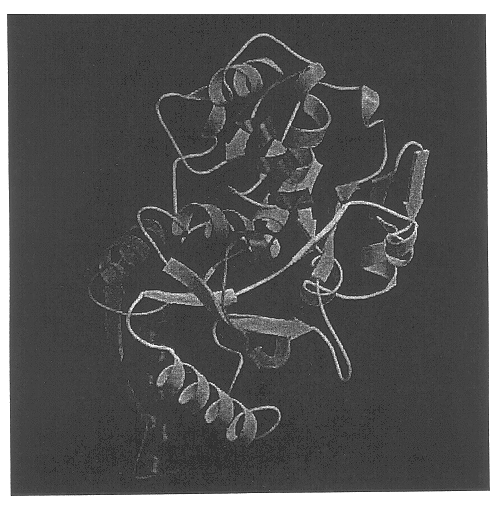Recombinant human serum transferrins containing peptides for inducing apoptosis in HIV-1 infected cells
a technology of transferrins and human serum, which is applied in the field of biological structures designed to induce apoptosis in hiv-1 infected cells, can solve problems such as unambiguous identification of donors
- Summary
- Abstract
- Description
- Claims
- Application Information
AI Technical Summary
Benefits of technology
Problems solved by technology
Method used
Image
Examples
example 1
VSQNYVIVLRGDVSQNYVIVL (Mut. 1),
Example 2
VSQNYVIVLRGDSVSQNYVIVL (Mut. 2),
example 3
VSQNYVIVLGRGDNPVSQNYVIVL (Mut. 3) and
Example 4
VSQNYVIVLGRGDSPVSQNYVIVL (Mut. 4).
Each of the foregoing may be inserted at the N-terminal lobe sites hereinbefore described.
F. Subcloning of the HST Gene into the Baculovirus Protein Expression System:
The native HST gene would be subcloned into a baculovirus expression vector system (BEVS). The baculovirus expression vector system is now commonly used for expressing recombinant mammalian proteins. See O'Reilly, D. R., Miller, L. K., and Luckow, V. A. (1994) Baculovirus Expression Vectors: A Laboratory Manual, Oxford Univ. Press, Oxford. The baculovirus expression vector system uses insect cells to produce protein, and it is the first non-mammalian expression system that has been used successfully to generate functional full-length HST proteins. See Ali et al. (1996), Biochem. J. 319:101-105. The baculovirus expression method of Ali et al. (1996) produced a high-yield of functionally active HST (>20 mg / L), and this general method will be ...
PUM
| Property | Measurement | Unit |
|---|---|---|
| melting point | aaaaa | aaaaa |
| protein structure | aaaaa | aaaaa |
| resistance | aaaaa | aaaaa |
Abstract
Description
Claims
Application Information
 Login to View More
Login to View More - R&D
- Intellectual Property
- Life Sciences
- Materials
- Tech Scout
- Unparalleled Data Quality
- Higher Quality Content
- 60% Fewer Hallucinations
Browse by: Latest US Patents, China's latest patents, Technical Efficacy Thesaurus, Application Domain, Technology Topic, Popular Technical Reports.
© 2025 PatSnap. All rights reserved.Legal|Privacy policy|Modern Slavery Act Transparency Statement|Sitemap|About US| Contact US: help@patsnap.com

